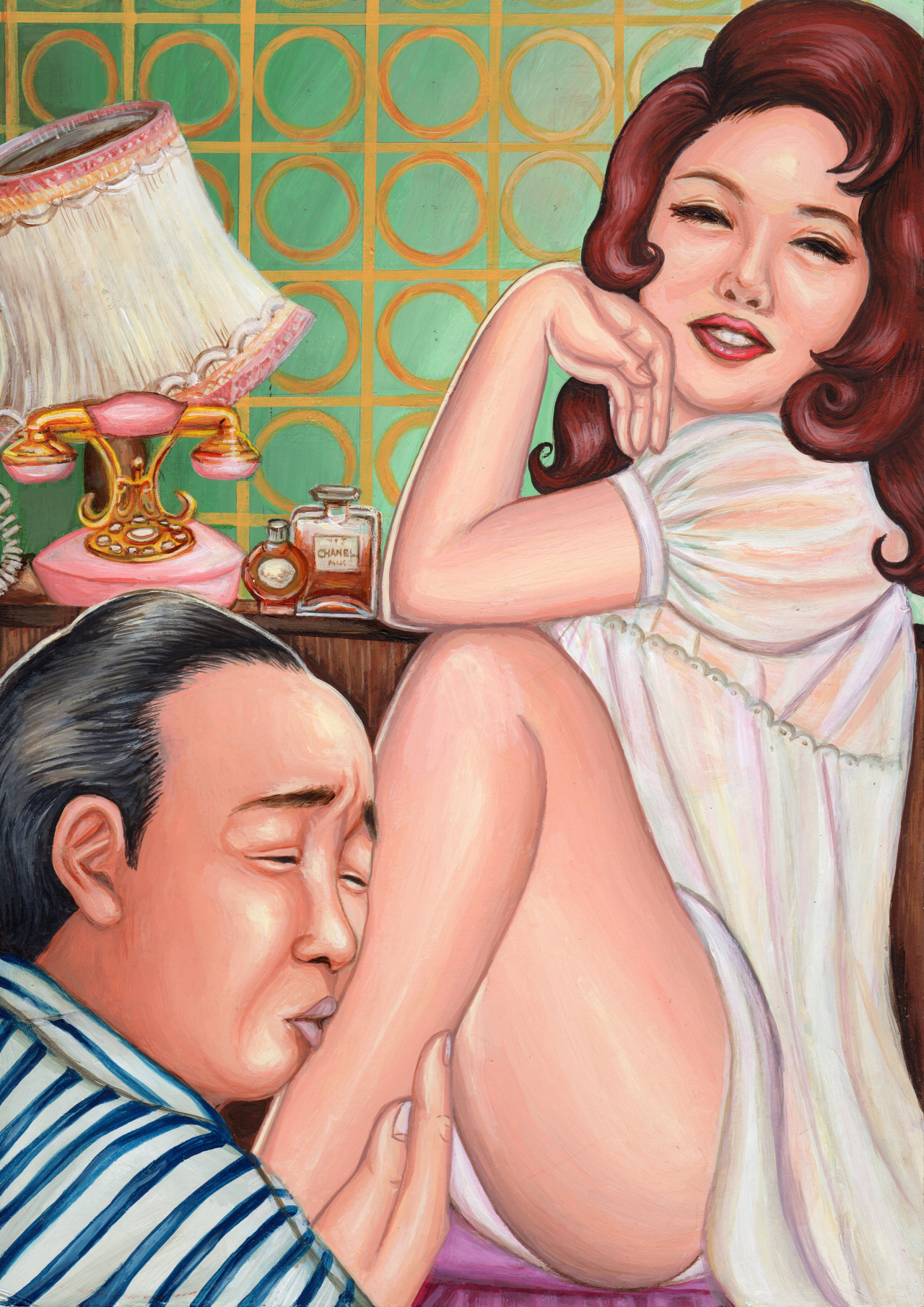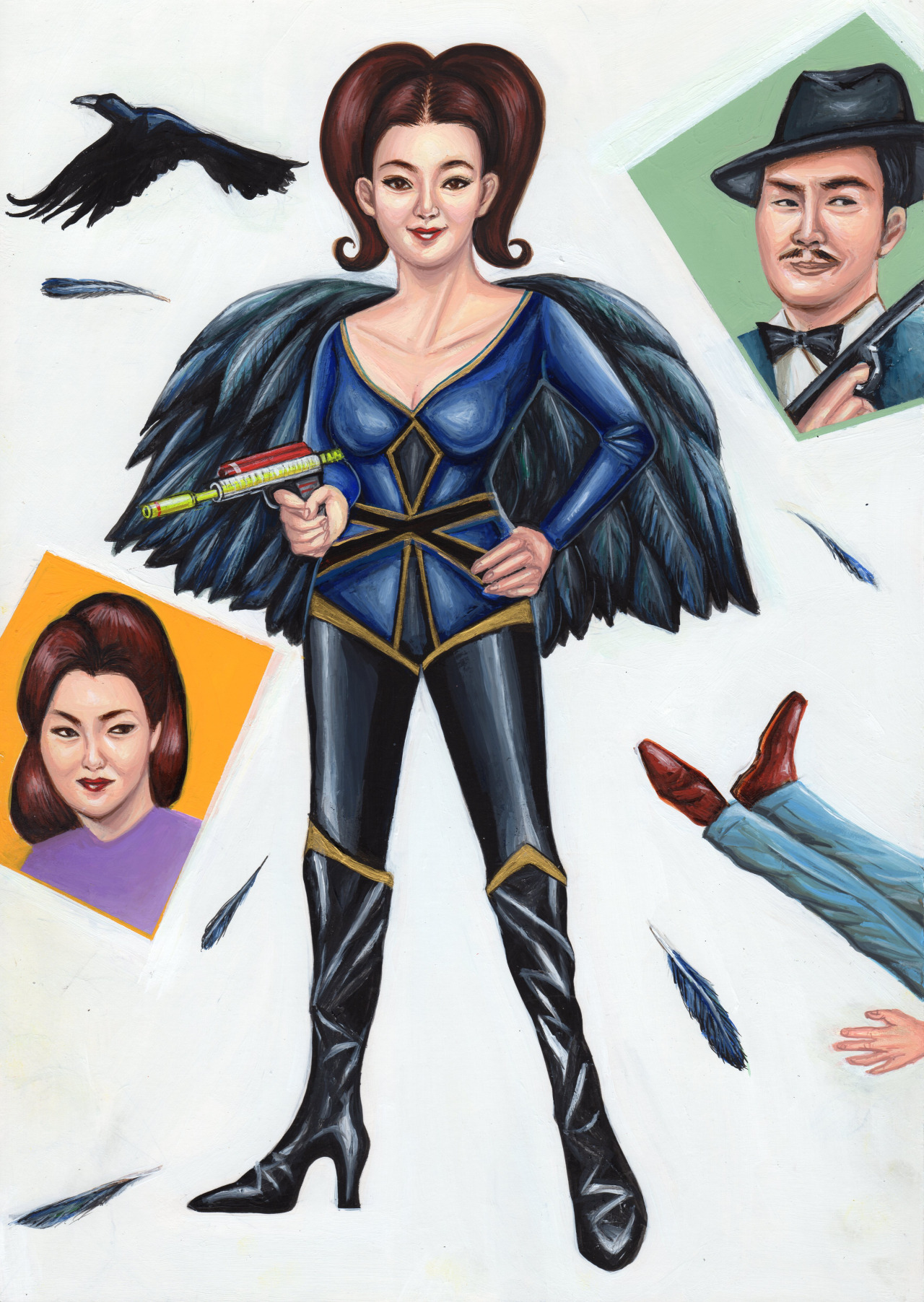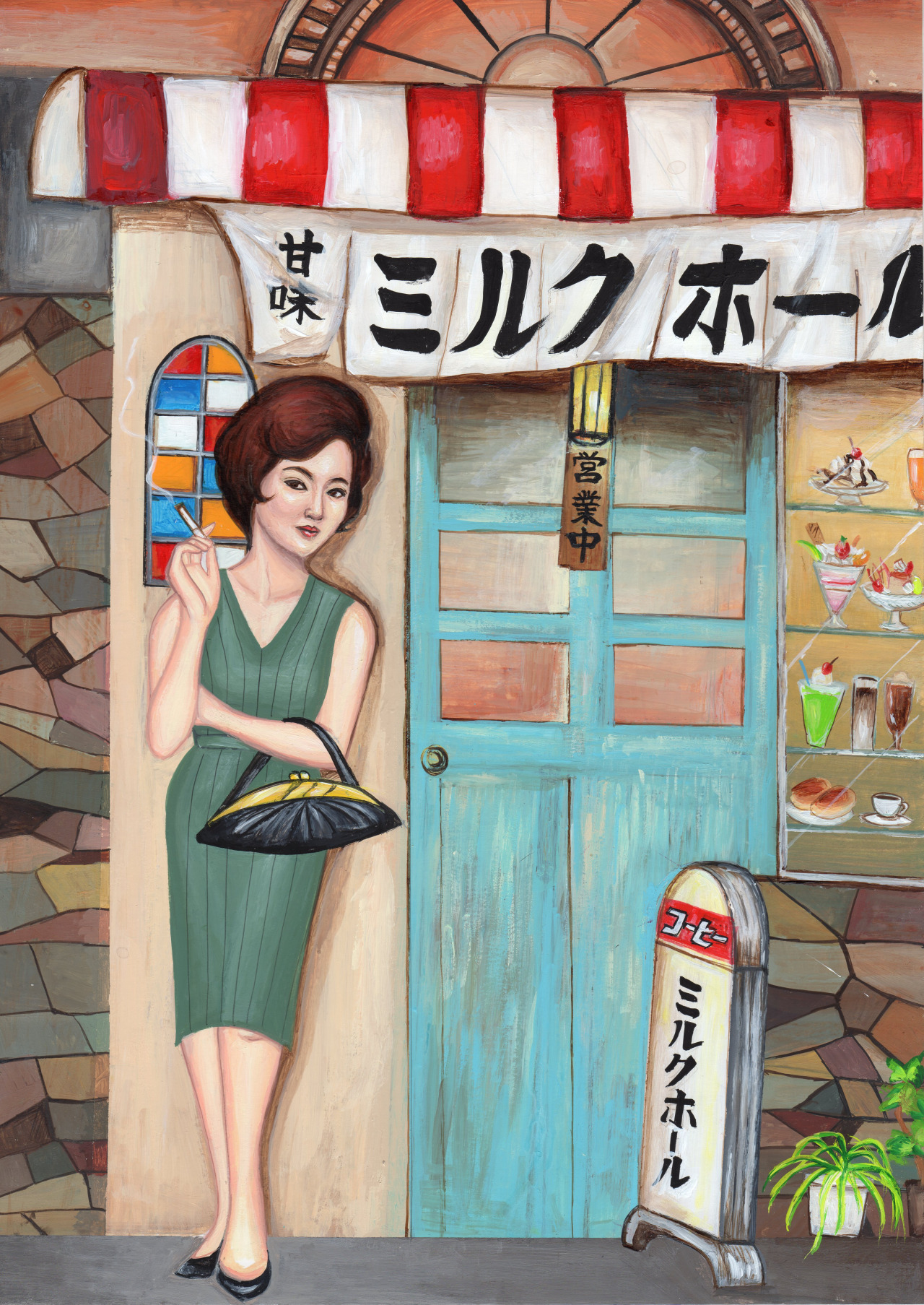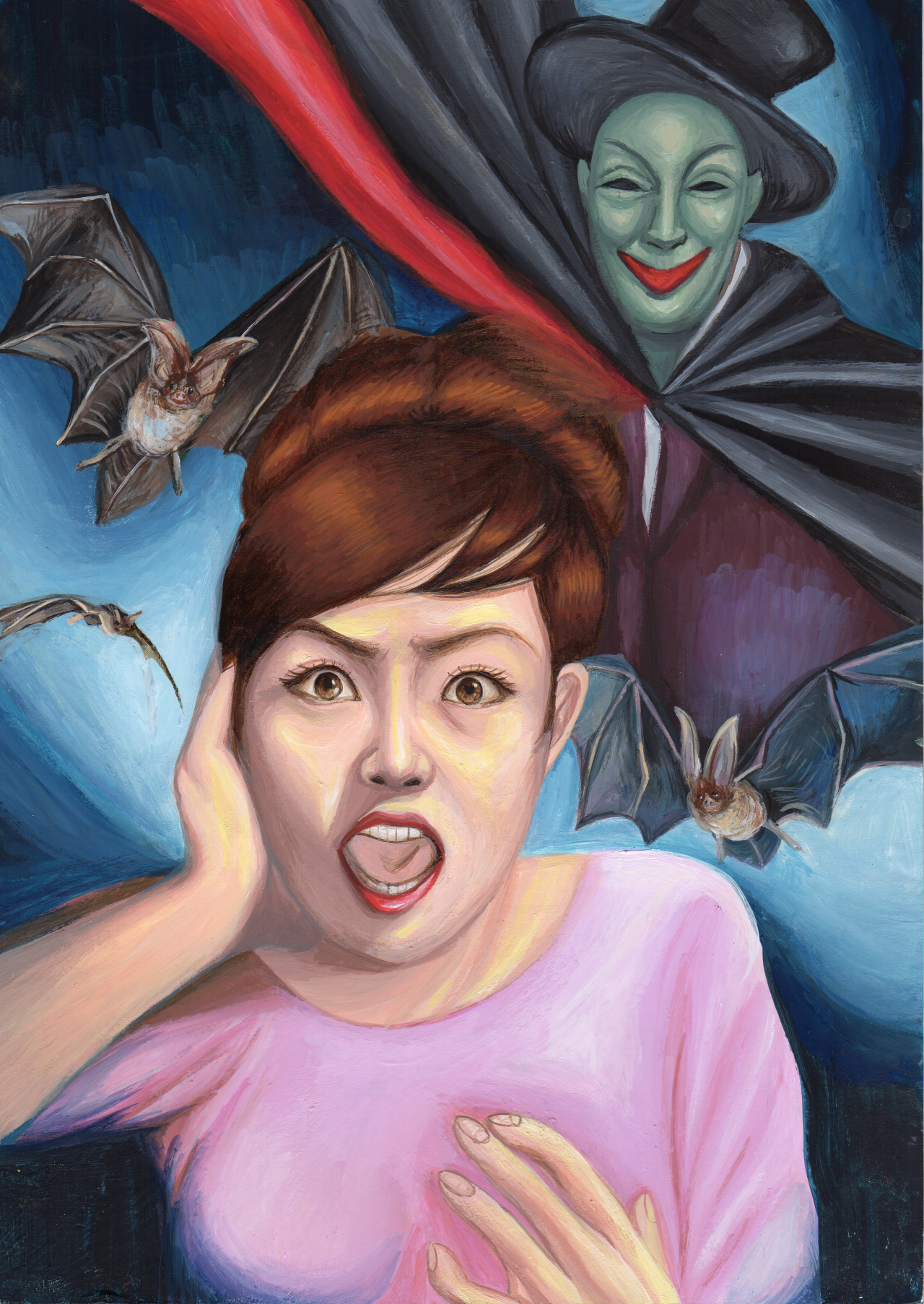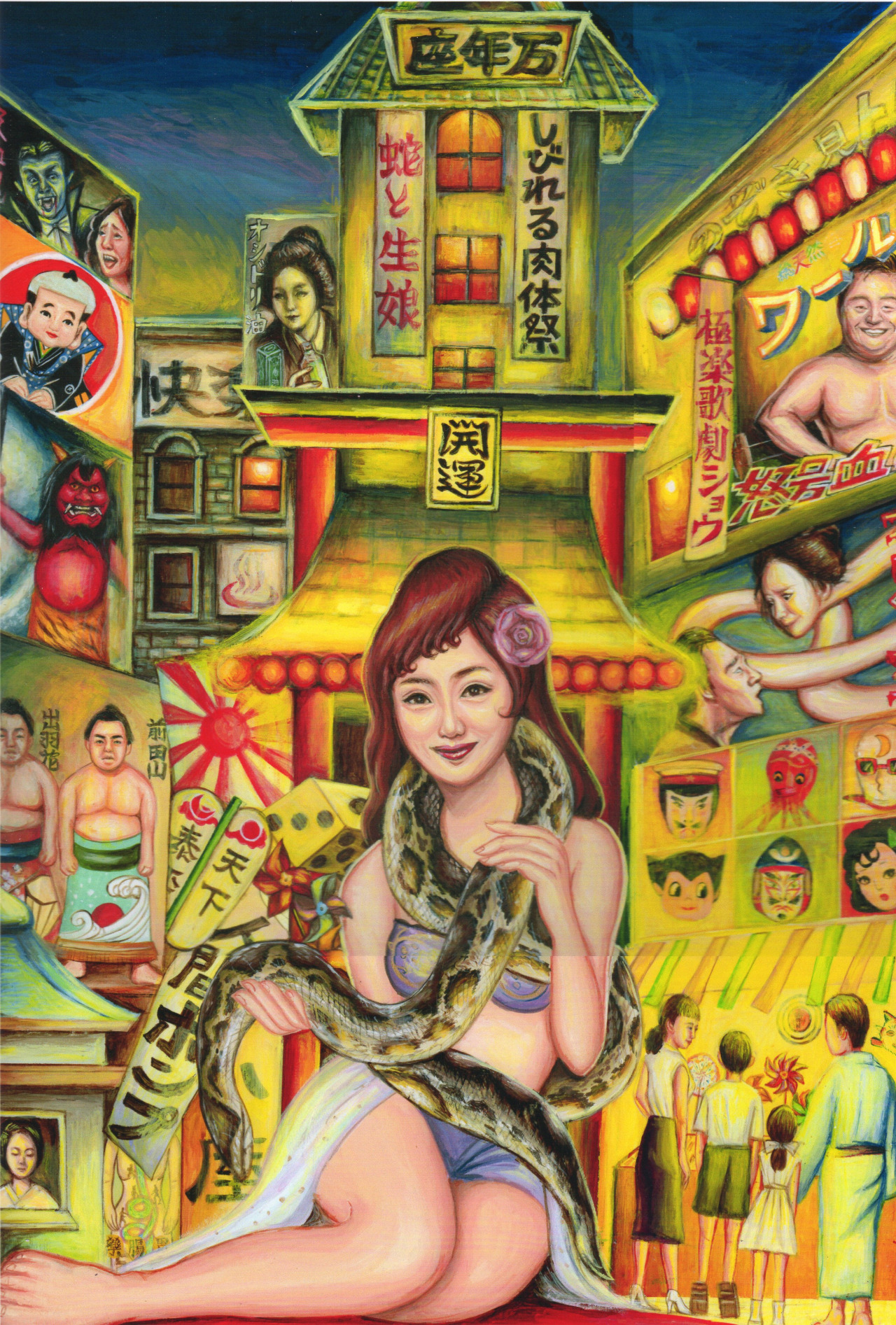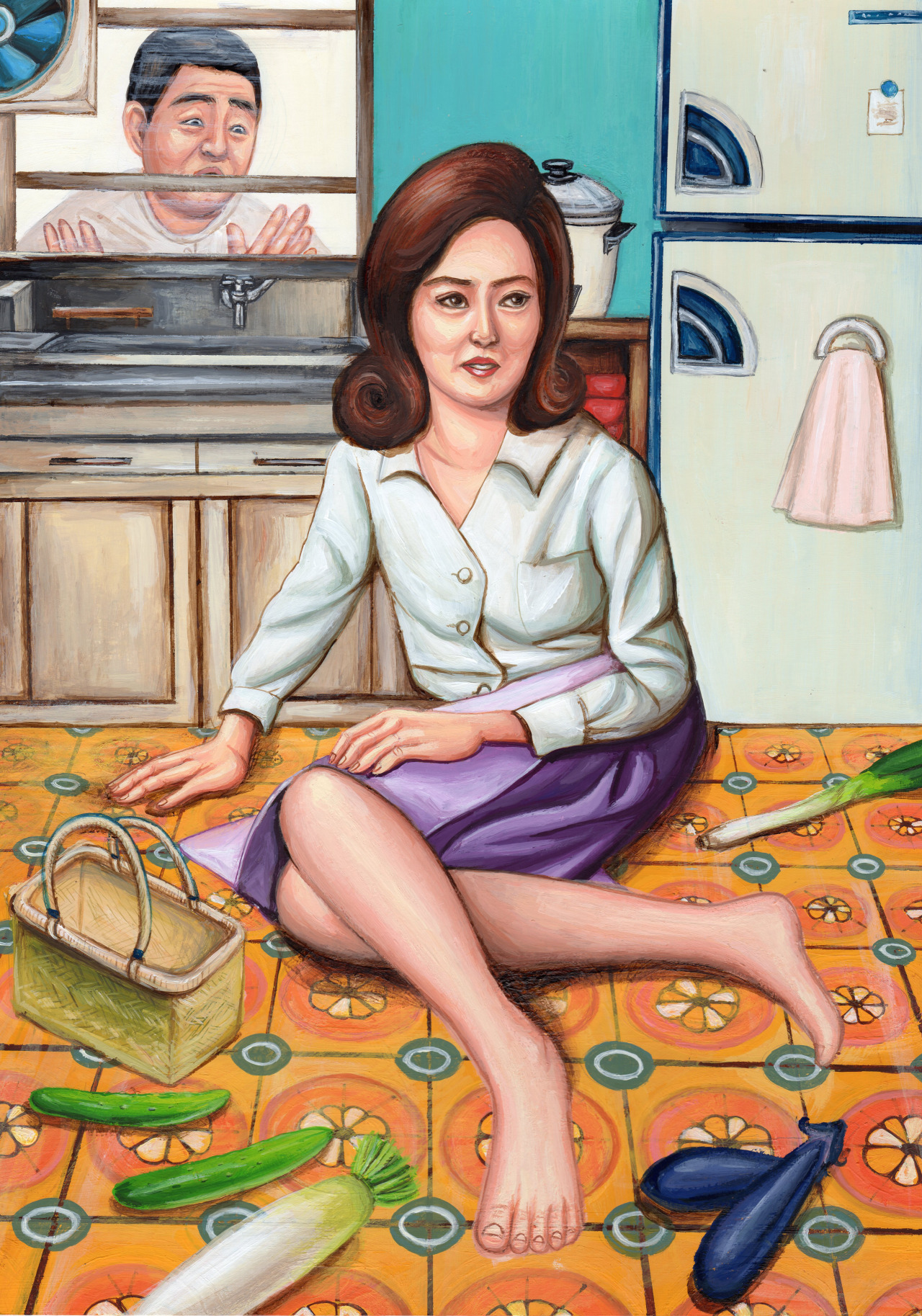The Showa era spans from 1926 to 1989 but the word evokes one specific slice of life--the early 60s to the late 70s, a period where Japan had rebuilt itself from the ashes of World War II and hadn't yet lost it's traditional values to the hedonistic consumerism of the 80s bubble economy. The nostalgia is so strong that you don't need to have lived during that golden age to remember it.
Though in the case of illustrator Yoshioka Rina, something seems off about her period-specific lonely housewives, go-go girls and bongos--and it's more than just the perspective.
What time frame of the Showa era does your work reflect?
The 1960s and 1970s as I imagine they were. I was born in 1977 so I didn't actually experience any of the things I draw. It's my mother's generation. I'm not interested in Showa in the historic sense--it's more like my interpretation of what I think that period was like based on its pop culture.
Illustrator Minami Shinbo described my work as "Showa as viewed by space aliens." I can't argue with that!
So you end up introducing anachronisms?
Some reference material is easier to come by than others, like brand logos and packaging designs. But sometimes modern elements sneak in and I don't even notice until someone points it out to me.
I have the same problem with perspective. The size and scale are all off but I don't notice until after the drawing is finished.
You graduated from Tama Art University so I assume you would have learned draftsmanship.
No, I majored in film and photography. I was inspired to start illustrating by the hand drawn movie posters I saw in India. They've got this kinetic aura, you know?
Why are all the women in your pieces named Naomi?
"Naomi" has a very Showa feel to it. You've got enka singer Chiaki Naomi, actress Tani Naomi--she was a big S&M pink movie starlet. It's a household name. I just want to draw women with interesting lives.
What attracts you to the Showa aesthetic?
It's more appropriate to say that my drawing style matches the Showa aesthetic. My work has a similar feel to Gekiga.
Right, the "mature" manga style that peaked in the 70s. That reminds me of an interview where artist Eguchi Hisashi comments that Gekiga isn't realistic, the pictures just have more lines.
Tell me about your collages.
I layer illustrations, then scan them. There's no Photoshop or anything. It's pretty analog. The results are totally happenstance. I couldn't recreate it if I tried. My aikido teacher is really strict--the kind who slaps you if you keep messing up--and the collages are the only thing he complimented. He keeps telling me that I should give up art.
But you just had your first solo exhibit, in Aoyama no less.
Yeah, and it went well. I got a lot of positive feedback, especially from the older crowd. I also sold two prints to TV talent Watanabe Naomi. She didn't even ask the price before buying them. Can you believe that? Celebrities!
Anyway, I still live at home so I don't have to worry about making a living from my art. In the morning I have a part-time job as a janitor so I'm free the rest of the day.
What do you have planned for Naomi?
Naomi's next adventure will take her to the tropics. Japanese citizens weren't allowed to travel abroad until the mid-60s. So Hawaii was this fantasy land--palm trees, beaches, steel guitars. It's a place people could only dream of.



